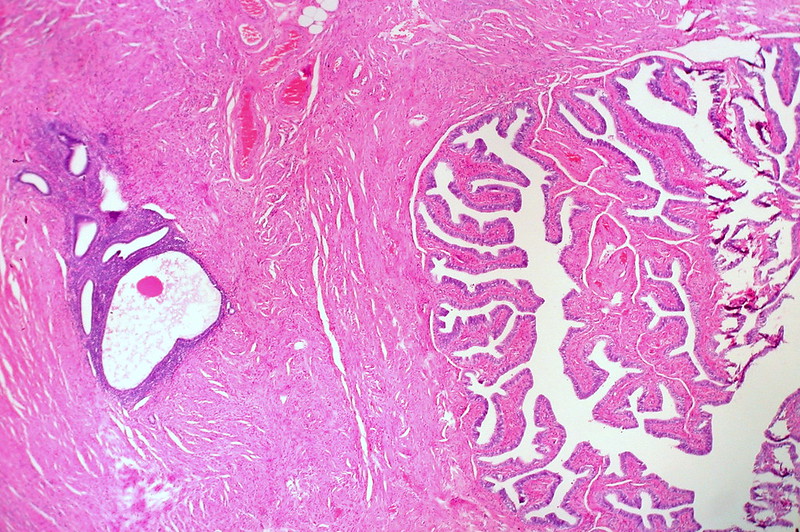
The New York Times recently published an article on medical gaslighting, and its disproportionate impact on women. The authors pointed out that women are more likely to be misdiagnosed than men and their pain dismissed. Medical gaslighting is rampant in pain management—particularly with regards to endometriosis.
Not many people know about endometriosis outside of the medical community or women who actually suffer from it. According to the Mayo Clinic, endometriosis is “a painful disorder in which tissue similar to the tissue that normally lines the inside of your uterus—the endometrium—grows outside your uterus.” This definition, however, does not capture the extent of the pain women actually go through and the lived reality.
As an endometriosis survivor, I spent five years in a wheelchair due to the severity of pelvic pain. My life during these years was confined to the four walls of the hospital and my bedroom. I had six surgeries, five nerve-blocks and ultimately a total hysterectomy before I was able to get back on my feet. I was on a cocktail of different painkillers such as fentanyl, morphine and even epidural ketamine. It was also during this time I came face-to-face with gender bias in pain management by the medical community. No time was wasted by doctors in dismissing my pain as psychological.
As an endometriosis survivor, I spent five years in a wheelchair due to the severity of pelvic pain. It was also during this time I came face-to-face with gender bias in pain management by the medical community.
I will never forget my own experience with gender bias. I was doubled over in excruciating pain. I was crying but hopeful that the gynecologist could help me. Instead, I felt belittled as he compared my experience of living with endometriosis to his sore arm from playing tennis. This was not an isolated incident.
Another gynecologist encouraged me to get pregnant to relieve the pain. The myth that pregnancy somehow makes the excruciating pain of endometriosis go away is just that—a myth. I endured the added insult of an older male doctor chiding me for not even considering the ‘obvious’ remedy of getting pregnant. In his eyes I was just a hysterical woman who did not need pain relief, but needed to have sex. Studies have shown that women of color are more disproportionately affected by such dismissals of their pain—it is easier to animalize a woman of color and call her hysterical and sexualize her. As a woman of color in pain, I was doubly disadvantaged. Gender-bias in pain-management is thus not only gender-discriminatory, it is also intersectional.
Such gender-bias is well-known, yet it continues to persist. The narratives and statistics are sobering. Most of the studies on pain are based on male anatomy and physiology. Last year, Science Daily published a study that concluded that when women expressed the same amount of pain as men, their pain was dismissed as less intense and psychotherapy was suggested instead instead of medication.
Such disparities and biases are a result of deeply entrenched stereotypes dating all the way back to Aristotle. Aristotle conceived of life as a series of hierarchies called the Great Chain of Being, with god and men right at the top, and women and animals right at the bottom—just above plants, rocks and minerals. Conceptions of hysteria and ‘hysterical’ women stem from Sigmund Freud’s theorization that women are ‘mutilated males’ and this leads to irrational and unfathomable psychosis resulting in a woman being ‘difficult’ for no reason. Hysteria itself comes from the root word “hystera,” Greek for uterus.
It is no surprise then that gender bias in pain management affects women living with endometriosis more acutely. “Endometriosis patients are often viewed by their treating doctors as reproductive bodies with hysterical tendencies,” said Dr. Kate Young, a public health researcher at Monash University.
This pain gap persists in so many ways. For endometriosis survivors, the pain gap leads to a downward spiral of self-doubt and second guessing when our pain is minimized. When doctors dismiss our pain it not only makes the pain invisible, but women as well.
U.S. democracy is at a dangerous inflection point—from the demise of abortion rights, to a lack of pay equity and parental leave, to skyrocketing maternal mortality, and attacks on trans health. Left unchecked, these crises will lead to wider gaps in political participation and representation. For 50 years, Ms. has been forging feminist journalism—reporting, rebelling and truth-telling from the front-lines, championing the Equal Rights Amendment, and centering the stories of those most impacted. With all that’s at stake for equality, we are redoubling our commitment for the next 50 years. In turn, we need your help, Support Ms. today with a donation—any amount that is meaningful to you. For as little as $5 each month, you’ll receive the print magazine along with our e-newsletters, action alerts, and invitations to Ms. Studios events and podcasts. We are grateful for your loyalty and ferocity.
Up next:





